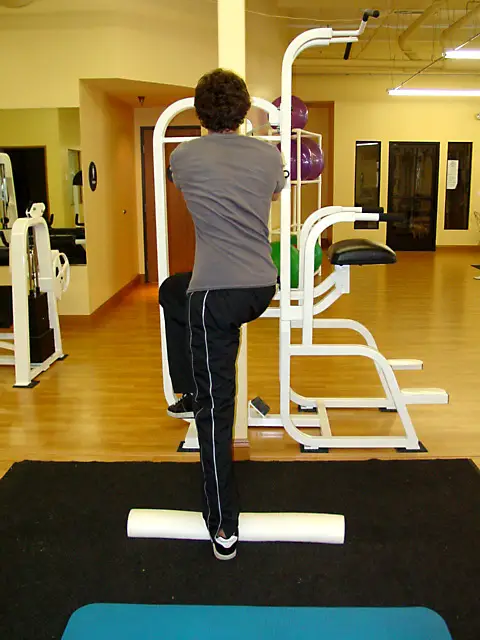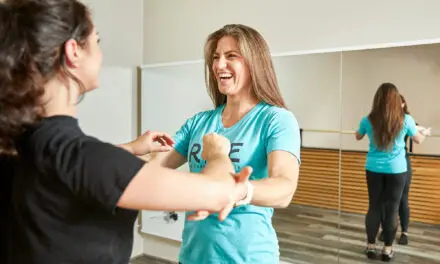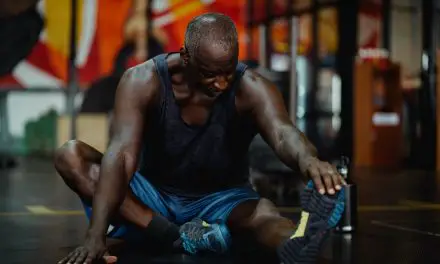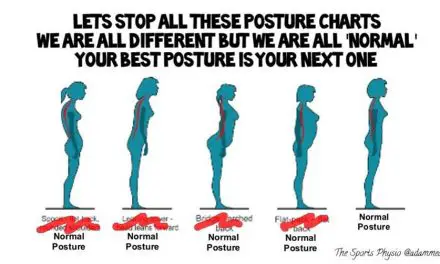Maybe bodybuilders and those who just want to get buff should include stretching as part of their workout routine. Who knew that stretching at a certain intensity could help elicit muscle hypertrophy? A team of researchers from UBC Okanagan in Kelowna, British Columbia found that six weeks of stretch training creates a “strong enough stimuli to increase muscle thickness and fascicle length and decrease pennation angle” in the lateral and medial gastrocnemii without changing the maximum voluntary contraction of during plantar flexion. (1)
The researchers recruited 21 young men where 11 of them were randomly assigned to the stretch training group while the rest were put in the control group in which they did not do any stretching. The stretching group had their nondominant leg stretched in a static, passive way with a leg press machine, where the subject sit and place the ball of their feet on the machine’s platform. When he were told “Go,” the subject removed their dominant leg from the platform and the nondominant leg is put in a pressure stretch with the ankle and foot in dorsiflexion. This stretch was maintained for three minutes, and the training sessions were done five days a week for six weeks. There was no stretch training in week six.
The calf muscles in the dominant leg were measured before the trial, at the end of weeks one, three, five, and six. Simpson et al. found that at day five, “the stretched [medial gastrocnemius] fascicles were longer than baseline and longer than the stretched [lateral gastrocnemius].” It took longer for the lateral gastrocnemius to lengthen. Muscle thickness increased by 5.6 percent, pennation angle decreased by 7.3 percent at week one, 8.76 percent at week three, and 9.53 percent at week six.
They also found that different parts of the calf muscles responded differently to the stretching. While there is no change in the length of the Achilles tendon, stretch training increased both gastrocnemius thickness and unequal fascicle lengths between the medial and lateral gastrocnemii.
This is the first human trial the examined the effects of stretching with muscle hypertrophy and fascicle length, the researchers reported. When asked if there were any differences between the experimental group and control group, corresponding author Dr. Jennifer Jakobi, who is an associate professor of School of Health and Exercise Sciences at UBC Okanagan, clarified that that they also used the untrained leg of the experimental group as an internal control, which provides a “stronger experimental design than an external control group.”
“Irrespective, over the duration of training the experimental (stretched) leg changed, the unstretched leg and the control group did not,” she told Massage & Fitness Magazine in an email interview.
While this research be extrapolated to clinician or field use? Is the evidence sufficient enough to warrant some changes in how physiotherapists, strength coaches, and personal trainers work with their patients or clients?
While this study shows promising evidence that chronic stretching with the right amount of load could elicit muscle hypertrophy, Dr. Jakobi told us that this is not a “quick fix” to getting swole.
“Skeletal muscle is extremely malleable/plastic. This potential for adaptations in muscle fascicles, albeit preliminary, does indicate that clinicians across all fields should recognize that stretching has many different levels of adaptation,” Jakobi described. “It requires both time within it stretch (note these stretches were held for three minutes) as well as a duration for adaptation. This was a very long stretch training experiment relative to most. Thus, these facts highlight that principles (frequency, intensity, time, type) once reserved for strength and endurance training to induce skeletal and cardiorespiratory adaptations like hold a place in stretch training.”
It may be possible that this study on calf muscles could be applied to other muscles, like the rotator cuffs, hamstrings, and pectoralis muscles, but there some considerations so that clinicians and trainers do not jump to conclusions.
“One must consider how these muscles (notably rotator cuff and pecs) are muscle groups that have many different contributions to a movement. The shoulder for example requires both rotation as well as stabilization,” Dr. Jakobi said. “To find a position to induce change in one group, while not limiting another would be a great challenge. In addition to gaining appropriate positioning, stretch training involves no active contraction. This would be extremely difficult in these muscle groups. There is greater potential for the hamstring.
“Additional to the fascicle orientation controlling synergists would be easier but consideration must be given to muscles that surround and stabilize the pelvis or assist with hamstring activity (gluteus medius, for example).
“We are continuing to exploring this conundrum relative to absolute strength. As for athletic performance, again promising but one must recognize that the measures you suggested are dynamic and involve many muscle groups.”
Some previous research and systematic reviews indicate that static stretching is “detrimental” or have no benefits to athletic performance, which may make some coaches and clinicians think that stretching has little or no benefits. (2,3) However, this isn’t exactly what these reviews indicate.
“The literature is equivocal,” Dr. Jakobi said. “But what is exciting is how many more scientists are working to determine the underlying mechanism and benefit of stretch training. Controversy will remain until a number of studies are done with similar training protocols to repeat and validate current observation. The largest factor is where does the athlete, coach, and clinician want the level of adaptation to occur (strength, flexibility etc.,) AND when is that adaptation needed. I would suggest the stretch training protocol done during training and off-season is very different than the pre-performance and competition stretching routine. Thus, stretching just like sprint and endurance training might have unique adaptations based upon FITT factors identified above as well as type (dynamic, static, PNF).”
So how could future research on this topic be better, such as methodology?
“Technology continues to rapidly advance and this will change the type of investigations that are undertaken across the field of neural, muscle and tendon research; inclusive of but beyond stretching. Methodology is one element, but experimental design should also be considered. The key element is ensuring that stretch training does not induce activation of the muscle.
“Irrespective of the FITT elements, the muscle must remain inactive to be considered a stretch. I think this element, whereby we recorded EMG during every training session to ensure that the muscle was not contracting, should be used by scientists as well as clinicians.”
References
1. Simpson CL, Kim BD, Bourcet MR, Jones GR, Jakobi JM. Stretch training induces unequal adaptation in muscle fascicles and thickness in medial and lateral gastrocnemii. Scand J Med Sci Sports. 2017 Jan 30. doi: 10.1111/sms.12822.
2. Behm DG, Blazevich AJ, Kay AD, McHugh M. Acute effects of muscle stretching on physical performance, range of motion, and injury incidence in healthy active individuals: a systematic review. Appl Physiol Nutr Metab. 2016 Jan;41(1):1-11. doi: 10.1139/apnm-2015-0235. Epub 2015 Dec 8.
3. Kay AD, Blazevich AJ. Effect of acute static stretch on maximal muscle performance: a systematic review. Med Sci Sports Exerc. 2012 Jan;44(1):154-64. doi: 10.1249/MSS.0b013e318225cb27.
A native of San Diego for nearly 40 years, Nick Ng is an editor of Massage & Fitness Magazine, an online publication for manual therapists and the public who want to explore the science behind touch, pain, and exercise, and how to apply that in their hands-on practice or daily lives.
An alumni from San Diego State University with a B.A. in Graphic Communications, Nick also completed his massage therapy training at International Professional School of Bodywork in San Diego in 2014.
When he is not writing or reading, you would likely find him weightlifting at the gym, salsa dancing, or exploring new areas to walk and eat around Southern California.





